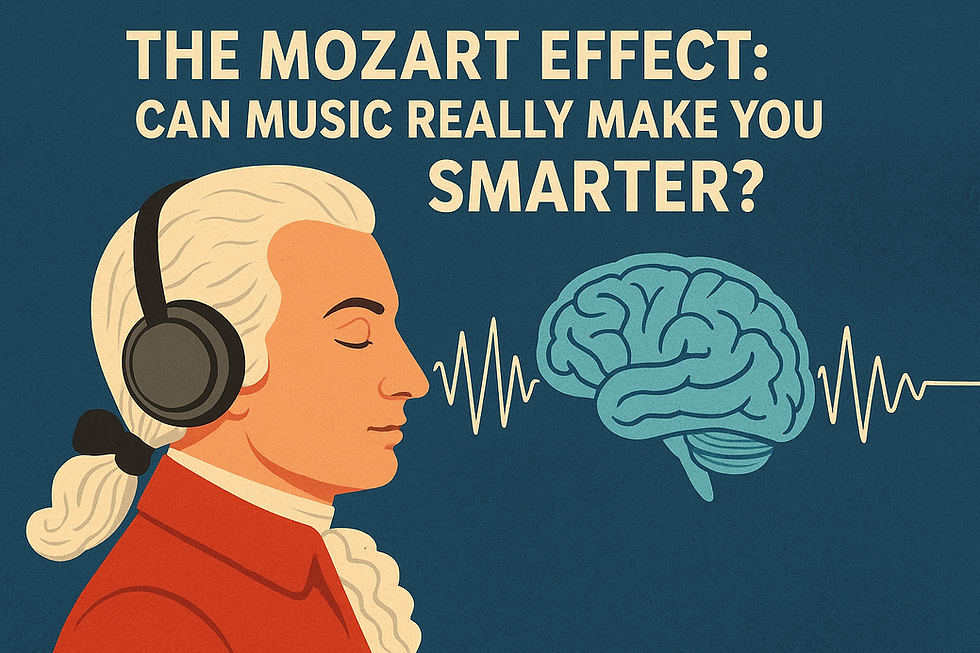"Interweaving Voices: A Journey Through Polyphonic Music"
- Sharanya naidu
- Jan 1
- 3 min read
Updated: Jan 15
When we learn about music history, it’s often presented as a straight path: one style leads to another, one composer influences the next, and one country dominates a particular period. But music history is so much more than a linear story. It’s like a polyphony—a texture where many independent voices come together to create harmony, tension, and complexity.
This blog explores how viewing music history as a polyphony can make learning more engaging and meaningful, helping you see connections between different cultures, genres, and time periods.

What is Polyphony, and How Does It Relate to History?
In music, polyphony means combining multiple melodies, each independent but working together. Imagine a Bach fugue or a lively African drumming ensemble—each part stands on its own but creates something beautiful as a whole.
When we think of music history in this way, we can learn about different “voices” in the story of music:
Different cultures and their unique traditions.
The influence of social and political movements on music.
Hidden stories of marginalized or overlooked artists.
By understanding music history as a web of interconnected ideas, we uncover not just what happened, but why it mattered and how it shaped the music we enjoy today.
Why Should You Learn Music History This Way?
1. Discover New Perspectives
Traditional music history lessons might focus heavily on Western classical music, but the world of music is much bigger! Exploring Indian ragas, African griot storytelling, or the evolution of jazz alongside Bach and Beethoven helps you appreciate how diverse traditions have influenced each other over time.
2. Understand Interconnectedness
Music doesn’t exist in isolation. For instance:
The printing press helped spread Western music in the Renaissance, but similar technological revolutions in India, like the arrival of gramophone recordings, transformed Indian classical music.
The influence of African rhythms in jazz, pop, and rock shows how cultural exchange can shape entire genres.
Seeing these connections helps you think critically about how music evolves.
3. Make Learning Fun and Interactive
Learning history as a polyphony encourages you to dive deep into topics you’re passionate about. Want to know how protest songs shaped political movements? Or how technology changed the way people performed and shared music? You can explore these themes without being tied to strict timelines.
How Can You Learn Music History as a Polyphony?
Layer the Voices
Pick a time period and look at music from different cultures during that time. For example:
Study Bach’s compositions alongside the Carnatic music of Thyagaraja.
Compare the medieval music of Europe with the oral traditions of African griots.
Think about how these traditions may have been influenced by global events, like trade, migration, or colonization.
Focus on Themes Instead of Dates
Instead of memorizing timelines, explore themes that connect music across the world. Here are a few ideas:
Music and Revolution: How has music been used to inspire social change?
Technology in Music: How did innovations like the piano, radio, or streaming platforms change how people create and share music?
Cultural Crossovers: What happens when two musical traditions meet? For example, the rise of jazz was influenced by African rhythms meeting European harmonies.
Collaborate with Others
Music is a shared experience, and learning about it can be, too. Try these ideas:
Group Projects: Team up with friends to research different aspects of a single period. One person might study instruments, another the composers, and another the cultural context.
Discussions: Share what you learn and connect the dots between your findings.
Use Modern Tools
Take advantage of apps, podcasts, and documentaries to explore music history. Here are a few suggestions:
Spotify or YouTube: Create playlists of music from different traditions and time periods to hear the connections.
Virtual Experiences: Look for virtual museum tours or interactive apps that let you explore instruments and performances from the past.
Why It Matters for Music Learners
Understanding music history as a polyphony doesn’t just give you knowledge—it makes you a better musician.
Broadens Your Perspective: You’ll appreciate the global influences behind the music you play or sing.
Inspires Creativity: Discovering new traditions and styles can spark fresh ideas in your own music-making.
Connects You to the World: You’ll see how music has always been a universal language, bringing people together across time and space.
Final Thoughts
Learning music history as a polyphony is like uncovering a rich, multi-layered story where every voice has something valuable to say. By exploring diverse perspectives, focusing on themes, and embracing modern tools, you’ll deepen your understanding of music—and have more fun along the way!



Comments